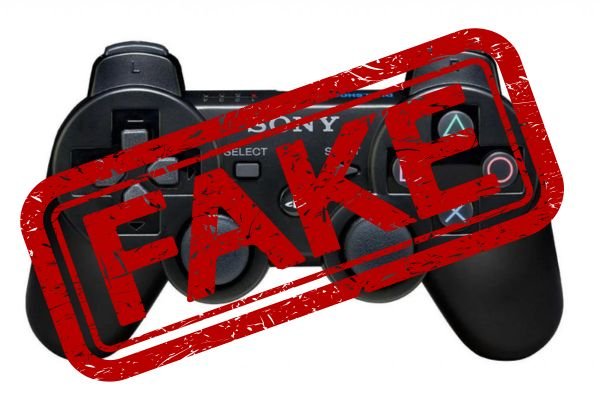In the world of gaming, authenticity matters. When it comes to purchasing a PlayStation 4 controller, knowing how to tell if a PS4 controller is fake can save you from a disappointing experience. Fake controllers often come with various pitfalls, such as poor performance, unreliable features, and a lack of durability.
This guide aims to equip you with the knowledge to distinguish genuine controllers from fakes, ensuring you make informed purchasing decisions and enjoy a seamless gaming experience.
As the gaming community expands, the market for accessories like controllers has grown exponentially. Unfortunately, this increase has also led to the rise of counterfeit products.
Understanding the characteristics of authentic controllers is crucial, especially if you’re buying online or from an unfamiliar source. By the end of this guide, you’ll be well-prepared to spot a fake PS4 controller and avoid unnecessary frustrations.
Why Fake PS4 Controllers Are a Concern
Using a fake PS4 controller can significantly impact your gaming experience. Here are some concerns associated with fake controllers:
Performance Issues: Fake controllers often lack the precision and responsiveness of genuine ones. You may notice delayed inputs, unresponsive buttons, or inconsistent analog stick movements. This can severely affect gameplay, especially in fast-paced games where every millisecond counts.
Durability: Counterfeit controllers typically use inferior materials, leading to quicker wear and tear. You might find that the buttons stick, the analog sticks become loose, or the controller stops working altogether after minimal use. Many gamers have reported that fake controllers began to malfunction after only a few hours of play.
Compatibility Problems: Some fake controllers may not fully support all PS4 features, such as motion controls or vibration feedback, which can detract from gameplay. This can lead to a frustrating experience where features you expect to work simply don’t function as they should.
Health Risks: In some cases, counterfeit products are manufactured with harmful materials that can pose health risks. For instance, toxic plastics or poorly designed electronics could lead to overheating or even electrical issues. Ensuring your gaming gear is safe is not just about performance; it’s about protecting your health.
Lack of Warranty and Support: Unlike genuine controllers, which come with warranties and customer support, fake controllers often lack any form of customer service. If you run into issues, you may be left high and dry without help.
Statistics on Counterfeit Products
Statistics show that a significant percentage of consumers unknowingly purchase counterfeit products. According to the International AntiCounterfeiting Coalition, around 10% of all goods traded globally are counterfeit.
This number can be even higher in the electronics sector, where fake products often mimic their authentic counterparts. Being vigilant can save you not just money but also a lot of headaches down the line.
Additionally, a study from the Organisation for Economic Co-operation and Development (OECD) indicates that the trade in counterfeit goods costs legitimate businesses hundreds of billions of dollars each year. This loss translates to fewer resources for innovation and improved products, which ultimately affects consumers.
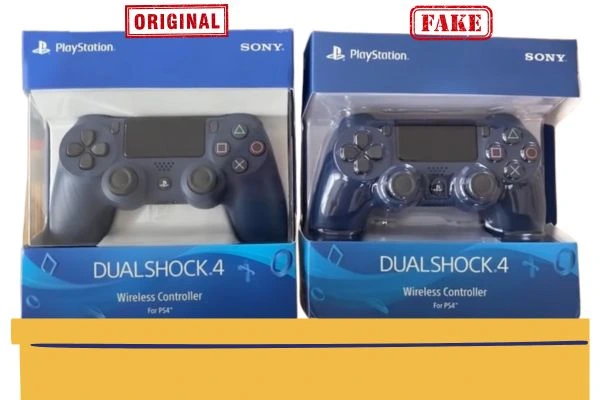
By understanding these issues, you can appreciate why it’s crucial to recognize the signs of a fake PS4 controller.
In the following sections, we’ll explore how to spot the differences between genuine and fake controllers, ensuring you know how to tell if a PS4 controller is fake before making a purchase.
Key Differences Between Genuine and Fake PS4 Controllers
Recognizing whether a PS4 controller is fake requires a keen eye for detail. Here are the primary differences to look for:
Physical Appearance
Color Variations:
Genuine controllers have specific color palettes that are consistent across batches. Fake controllers may use incorrect shades or poorly matched colors.
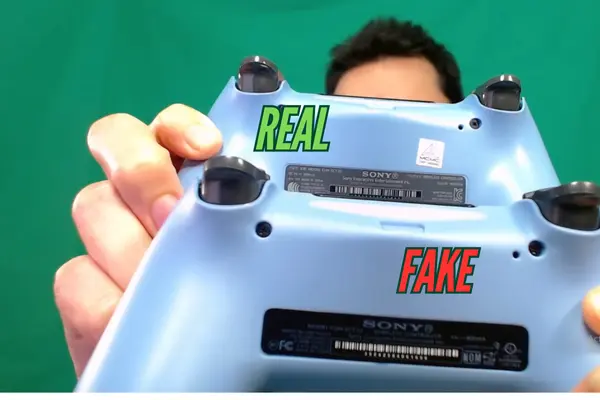
Example: A genuine PS4 controller in the popular “Titanium Blue” color will have a vibrant, consistent hue. A counterfeit version may appear darker or more muted.
Logos and Labels:
The Sony logo on genuine controllers is precise and well-defined. Counterfeit logos may appear stretched, faded, or misaligned.
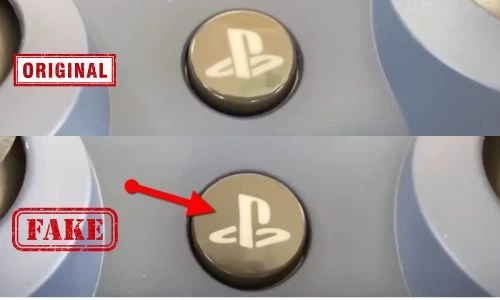
Example: The “S” in the Sony logo should be sharp and proportional. A stretched logo is a clear red flag.
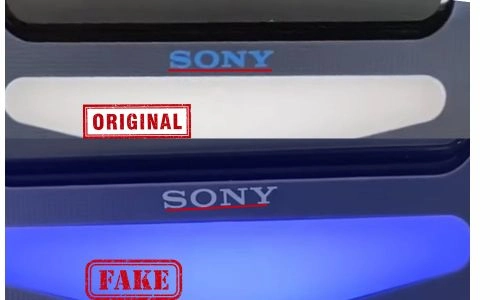
Sticker Quality:
The sticker on the back of the controller is a critical indicator. Genuine controllers have high-quality, well-applied stickers without air bubbles.
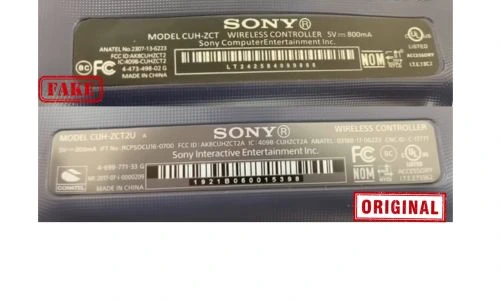

Inspection Tip: Look for spelling errors and the presence of air bubbles; these are signs of a counterfeit product.
| Feature | Genuine Controller | Fake Controller |
|---|---|---|
| Color | Consistent, vibrant hues | Mismatched or dull colors |
| Logo Quality | Sharp and proportional | Stretched or faded |
| Sticker Quality | High-quality, no bubbles | Poorly applied, often with air bubbles |
Build Quality and Weight
Weight: A genuine PS4 controller has a specific weight due to the materials used. If a controller feels unusually light, it’s likely a fake.
Tip: If possible, compare the weight with a known genuine controller.
Material Feel: The texture and sturdiness of the materials are also indicators. Genuine controllers feel robust, while fakes may feel flimsy or cheap.
How to Inspect a PS4 Controller Before Purchase
When buying a PS4 controller, especially online, it’s crucial to conduct a thorough inspection. Here’s how:
Requesting Photos:
Always ask for high-resolution images of the actual product. Focus on the back sticker, logos, and overall condition.
What to look for in photos:
Clear images of the back sticker and any logos.
Close-ups of analog sticks and buttons.
Key Areas to Examine:
Back Sticker Details: Pay special attention to spelling, spacing, and any signs of bubbling.
Analog Sticks and Buttons: Test the feel of the buttons and sticks. Genuine controllers have responsive buttons that click easily.
Testing the Controller
Once you have the controller in hand, here are a few methods to verify its authenticity:
In-Use Performance:
Connect the controller to your PS4 and test it out in a game. Pay attention to button responsiveness and analog stick precision.
Common Issues:
Delayed responses.
Analog sticks that feel “sticky” or do not move smoothly.
Sound Differences:
Listen for the sounds the buttons make when pressed. Genuine controllers produce a satisfying click, while fake controllers may sound muffled or lack clarity.
Conclusion
Knowing how to tell if a PS4 controller is fake can make a significant difference in your gaming experience. By paying attention to the details—such as physical appearance, build quality and performance—you can protect yourself from counterfeit products that may detract from your gaming enjoyment.

